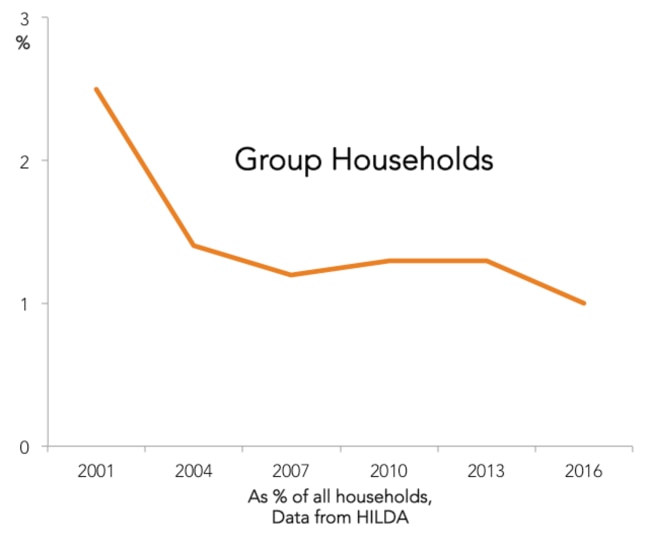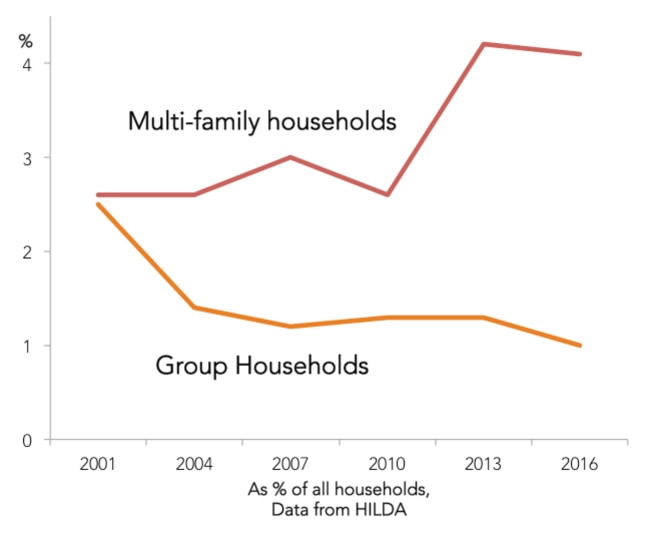The end of the Aussie share house
IT’S the Aussie rite of passage that is rapidly disappearing from our culture. And it’s sky-high property prices that are to blame.

AH, THE share house. A place of fun and hijinks. A place of tension. The location where you finally realise just how much your mum did for you, when it all disappears in a blink of an eye.
In my twenties, I lived in several share houses. My first, a surprisingly nice suburban home. Later, a draughty and dark number in Melbourne’s inner city, accessible only by a cobblestone lane.
I have very fond memories of them. Especially of the parties. (Fondness that might not be shared by the neighbours, perhaps.) In them I made friends for life.
Australia’s culture is steeped in the share house. John Birmingham’s terrific book He Died With A Felafel In His Hand and subsequent film couldn’t have been made without them. Helen Garner’s book Monkey Grip too.
But share houses are disappearing. This week’s Household, Income and Labour Dynamics in Australia (HILDA) Survey — an amazing and extremely high-quality study that tracks Australia diligently — shows the group house is an endangered species. The most recent data reveals it makes up just 1 per cent of households, a steep fall from 2001.

This rite of passage is no longer such a part of our culture. It is, sadly, easy enough to see why. The first reason is property prices.
The classic share house is an inner city home with multiple bedrooms. But those are now trophy homes. Many are now renovated to within an inch of their lives and sport interior decoration worth more than the average 20-something makes in a year.
Such homes may now be inhabited by a young married couple who both work in finance, or perhaps a 60-something divorcee who leaves three bedrooms vacant. If a student or young worker does go home to such a place at night, it’s likely they do so without paying rent, and with their parent sleeping upstairs.

And that is the second and related reason share houses are fading. Young people are living with their parents for much longer. It might be cheaper to live in a share house than rent on your own, but if you can, it’s probably even cheaper to stay at home until you get a stable job.
In fact, some of the share houses in Australia are the same people who were living in them in 1990s. Middle-aged share houses are on the rise.
Australia’s influx of one-bedroom apartments are great for some people, but they don’t seem to suit share houses well. The rent might be lower than a house, but it’s hard to split the bills.
LEVELLING UP
The demise of the share house is a shame.
Naive and selfish on the day you arrive, the share house can help shape you. You collect some housemate horror stories that teach you a lot about how not to behave. You learn about the kind of people you like, the traits you value in others, and the ways in which you need to change. It can help turn a person into a stable and capable adult.
People mature in share houses, and we can even see that in the data. The HILDA study tracks the way households break down and then reform. Almost half of all people living in a group house won’t be doing so next year. And when they move out of that share house, the biggest reason is coupling up. The second biggest reason is moving out on their own. Either of which is a sign of independence and maturity.
BRADY BUNCHES
But as the share house disappears, a new household form seems to be rising to take its place. The HILDA data shows a steady rise in multi-family households, as this next graph shows.

Is this the new share house? Moved to a later stage in life? Not exactly sadly. More likely it is another symptom of the same trend that has murdered the share house — rising cost of housing is forcing families to bunker down together to save money.
It is a frightening thought for anyone who thinks they might have missed the share house phase of their life — it might be forced upon you somewhat later in life than you think.
Jason Murphy is an economist. He writes the blog Thomas the Think Engine.




